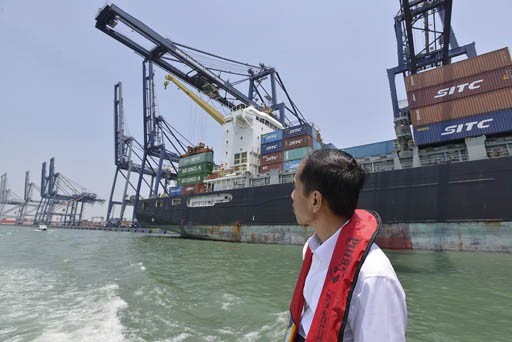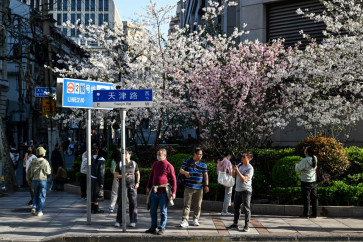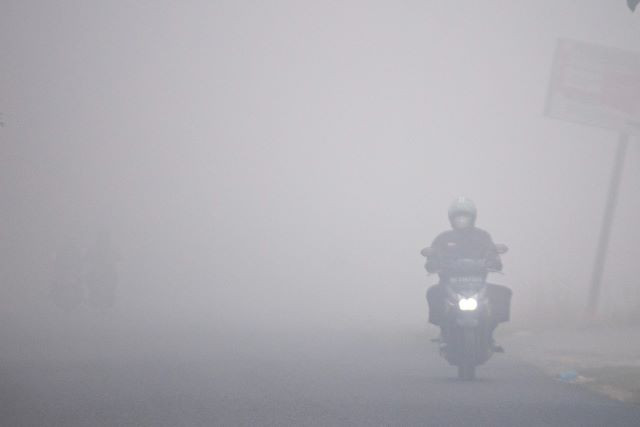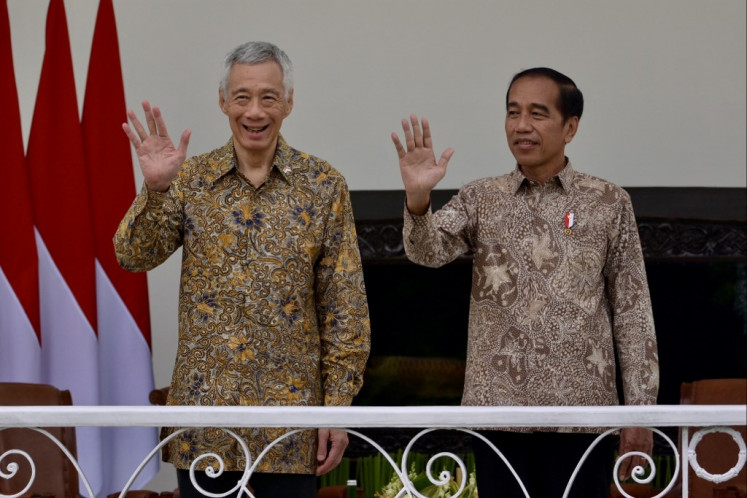Where are the engineers?
There is a huge shortage of civil engineers, measurable in the tens of thousands, and not enough graduating from the universities, and there is a problem of standards from the good and acceptable to those which are less so.
A recently published report worryingly stated that only 10 percent of construction experts over the country are certified professionals and that, even among the labor force, there needs to be a considerable improvement in the level of skills, which is recognized, in too many cases, as being below the standards to be found across ASEAN. A great deal needs to be done in both training and education.
Change Size
 Joko "Jokowi" Widodo inspects Tanjung Priok Port in North Jakarta in a September, 2014 file photo. (Antara)
Joko "Jokowi" Widodo inspects Tanjung Priok Port in North Jakarta in a September, 2014 file photo. (Antara)
W
hile attending this year’s annual graduation ceremony at President University, it was a real pleasure to see the excitement and happiness from a sense of achievement of the many graduates, who would be moving on to the next phase of their lives in their chosen careers.
It was also a humbling reminder to see the emotion expressed when parents greeted their successful children, in many cases a recognition of the family sacrifices willingly made to foster a better life for the next generation, and an acknowledgment that education matters to most people. In turn, this places a continuing responsibility on and challenge to those of us who are involved in the education of future generations at whatever level of involvement.
The country needs an extensive build out of infrastructure at a rate which has not yet been met, nominally something like US$80 billion/year covering all sectors.
While the government is not able to provide all the funding that is required for this level of commitment and requires about one third from private sector sources, the other less stated issue concerns the human resources, both in terms of quantity and quality, needed to execute the various projects that have been identified for construction.
There is a huge shortage of civil engineers, measurable in the tens of thousands, and not enough graduating from the universities, and there is a problem of standards from the good and acceptable to those which are less so.
A recently published report worryingly stated that only 10 percent of construction experts over the country are certified professionals and that, even among the labor force, there needs to be a considerable improvement in the level of skills, which is recognized, in too many cases, as being below the standards to be found across ASEAN. A great deal needs to be done in both training and education.
The quite recent Law ( 2015 ) on Engineering will strengthen the role of the Institution of Engineers Indonesia (PII) towards enhancing the role of professionalism among engineers generally and civil engineers in particular, with their responsibility for establishing, monitoring and enforcing educational standards, but it will take time and effort.
These are important targets to belay the perception in professional engineering circles in Indonesia that Indonesian engineers are not adequately recognized in international circles.
In order to achieve international recognition it will be essential to ensure clearly understood standards for courses which match up with international standards.
I was personally involved in reviewing the S1 (BSc) standards of the civil engineering programs of two of Indonesia’s top universities on behalf of the Council of Engineering Institutions (Europe) acting through the UK’s Institution of Civil Engineers, the oldest such body in the world, in 2001. Results were perfectly satisfactory and ideas for improvement were tabled. Other similar reviews were to be carried out but those for other universities, which had requested this international scrutiny, were curtailed as a result of the unfortunate bombing acts of that time.
An internal review of what university civil engineering programs should be teaching was carried out by the Institution of Civil Engineers (est. 1818 ) at the turn of the century, asking the fundamental questions of where the profession should be heading to be relevant for the future.
The age of increasingly sophisticated computers and software that can allow very complex problems to be analyzed means that professional engineers have more time to address the bigger picture of a development.
This review by the Institution clearly states that future civil engineering undergraduate programs, which had been heavily focused on analysis and design of engineering structures, whether regarding large buildings or dams, waterways or earthworks or even transport infrastructure, should direct more teaching and learning time on wider issues.
These would include those that affect the influence on the environment of engineering projects, appreciation of resources and interaction with other disciplines that have an impact on the decision on whether a project should proceed or not.
At the same time any modern university program should allow the opportunity to develop for those students with advanced analytical skills, since this is fundamental to advancing the science of engineering.
This is a far cry from the undergraduate programs that proceeded the computer age, where solutions to engineering problems relied on clever theoretical approximations to expected responses to external loadings on civil engineering structures.
Early computer programs, crude in today’s context, adopted these for quick analysis, but as computers improved these were phased out and replaced by increasingly sophisticated ones.
As engineering disciplines step up their professionalism, a prime focus of PII, then it is important that these changes that have been adopted in leading world universities be embraced in Indonesia’s top engineering programs. There is much work to do in this area.
Furthermore, it is important that today’s Indonesian engineers, and I have had the pleasure of interacting with many competent ones over the years, take their place at the top echelons of world associations and take pride in contributing to the development of new ideas, for example in how today’s and tomorrow’s technology will lead to more efficient cities as these expand in number and size, and as we increasingly adopt the power of the sun directly for our energy.
May those smiling faces at graduation in the future include many more engineers to propel Indonesia’s development?
***
The writer is international chancellor at President University, and also director at Nusantara Infrastructure Tbk.
---------------
We are looking for information, opinions, and in-depth analysis from experts or scholars in a variety of fields. We choose articles based on facts or opinions about general news, as well as quality analysis and commentary about Indonesia or international events. Send your piece to community@jakpost.com.









